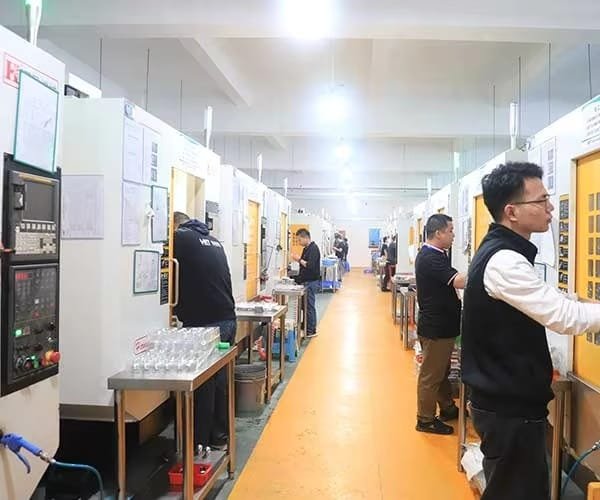Electrical Discharge: Commonly known as EDM, machining is a highly specialized and non-traditional production method used extensively in many different sectors to shape and produce extremely hard materials with a degree of precision difficult to reach using standard machining techniques. This special process is perfect for producing complex geometries, detailed contours, and intricate designs that would otherwise be difficult to achieve using conventional cutting tools since it depends on electrical sparks to progressively erode material from a workpiece without the need of direct mechanical contact.

In sectors such aerospace, automotive, medical device manufacture, tool and die production, where accuracy is of the utmost relevance, EDM has become an indispensable technique due to its great degree of accuracy and capacity to deal with hardened metals. For engineers, machine operators, and manufacturing professionals, knowing the exact structure and functionality of an EDM machine diagram is absolutely vital since it offers a whole picture of how the several parts of the machine cooperate to attain precision machining and best performance.
Understanding EDM Technology

Discharge of Electricity Highly prized for its ability to cut and shape conductive materials with an extraordinary degree of accuracy and low residual stress on the workpiece, machining—also known as spark erosion machining—is a material removal process. The basic idea underlying EDM is creating regulated electrical discharges, sometimes referred to as sparks, between an electrode and the workpiece to produce localized melting and vaporization of the material, hence accomplishing highly controlled material removal. EDM is a non-contact process, unlike conventional machining techniques including milling, drilling, and turning, which involve physical contact between the cutting tool and the workpiece, so greatly lowering the risk of mechanical distortion or tool wear.

Though their method of application, electrode design, and intended use cases vary, two main forms of EDM machines—Wire EDM (WEDM) and Sinker EDM (also known as Die-Sinking EDM)—function based on the same fundamental electrical discharge principle. While Sinker EDM uses a solid, pre-shaped electrode, usually made of graphite or copper, which is gradually “sunk into the workpiece to melt and form intricate cavities, making it ideal for injection molding part-making and detailed component machining,” Wire EDM uses a thin, continuously moving wire, usually made of brass, tungsten, or copper, which is electrically charged and moves across the workpiece to cut complex shapes with extreme precision.
The Origins and Evolution of Electrical Discharge Machining

Though many people view Electrical Discharge Machining (EDM) as a modern production method, its roots are in the the middle to late eighteenth century. Observing that electrical discharges may erode materials in 1770, British physicist Joseph Priestley made a revolutionary discovery exposing the possibility of this phenomena for next machining uses. Fascinatingly, Priestley is also mostly credited with helping to find oxygen, which greatly advanced the discipline of chemistry.
By means of an attempt to create a machining technique especially for electrically and conductive materials and metals, two Soviet researchers, B. R. Lazaredko and N. I. Lazaredko, investigated Priestley’s discoveries further fast forward into the 1940s. By means of conductive electrodes and a dielectric fluid, their work resulted in the successful control of the erosive characteristics of electrical discharges, hence laying the groundwork for the EDM method extensively applied today. Given their major achievements, the Lazaredkos are sometimes considered as the forerunners of contemporary EDM technology.

EDM kept developing until the 1960s, leading to the creation of the wire EDM process, a variation on the technique using a continuously moving wire as an electrode. Precision machining underwent a significant turning point in 1967 when the first wire EDM machine was presented in the Soviet Union. the wire EDM and technology has kept developing over the years, adding more accuracy, better surface polish, and tighter tolerance control, so transforming it into an essential tool in contemporary industrial sectors.
Breakdown of the EDM Machine Diagram

Understanding each of these components is essential for machine operators and engineers who wish to maximize the machining process since an EDM machine consists of several critical components that cooperate to ensure efficient material removal, precise metal machining accuracy, and smooth and consistent operational performance.
1. Power Supply Unit
Since it generates and controls the electrical energy needed to produce sparks between the electrode and the workpiece, therefore driving the whole machining process, the power and heat supply unit is among the most crucial parts of an EDM machine. The power and heat supply lets operators change important machining parameters including voltage levels, current intensity, pulse duration, and discharge frequency to maximize machining efficiency and surface finish quality. It also converts the alternating current (AC) input into precisely regulated direct current (DC) pulses, which enable material erosion by means of high-frequency electrical discharges.

2. Dielectric Fluid System
As it performs several important tasks, including providing electrical insulation between the wire of the electrode and the workpiece prior to spark generation, flushing away debris and eroded particles from the machining zone to maintain a clean cutting environment, and cooling the material to prevent excessive thermal damage that could compromise machining accuracy and component integrity, the dielectric fluid system is absolutely vital in guaranteeing the stability, efficiency, and cleanliness of the EDM process. The particular EDM machine type determines the different kinds of dielectric fluids used; deionized water is usually used in Wire EDM applications because of its exceptional electrical conductivity regulating properties and excellent surface finish; specialized dielectric oils are preferred for Sinker EDM applications because they provide optimal insulation and improved surface finish capabilities.

3. Electrode System
Since the electrode system in an EDM machine is the medium via which electrical discharges are produced and its material composition and design greatly affect the machining efficiency, wear rate, and final quality of the machined surface. While in Sinker EDM machines, a pre-shaped solid electrode, usually made from graphite, copper, brass or copper-tungsten alloys, is gradually lowered into the workpiece to create complex cavity shapes that would be difficult to produce using traditional cutting tools, in Wire EDM machines a thin wire, usually made from materials such brass, tungsten, or coated copper, is constantly fed through the workpiece and precisely controlled to create intricate cuts and detailed profiles. The electrode wire only gets close enough to start electrical discharges, which cause controlled material removal while minimizing electrode wear on itself; it does not physically touch the workpiece.

4. Servo Control Mechanism
Essential for obtaining stable electrical discharges and preventing unwanted short circuits, the advanced and highly precise servo control mechanism is meant to control the movement of sparks on the electrode in real-time, so guaranteeing that the optimal spark gap distance is constantly maintained between the electrode and the workpiece throughout the length of the machining process diamond guides. The servo control mechanism increases machining accuracy, improves surface finish quality, and reduces electrode wear by always changing the position of the electrode depending on real-time feedback from the control system of the machine, so contributing to better general efficiency and precision in the EDM process.

5. Workpiece and Fixture System
Even the smallest displacement can cause errors in accuracy and so affect the final dimensions of the thickness of the component, hence the workpiece conduct electricity—the metal or material being machined—must be securely held in place to prevent any undesired movement or vibration during the machining process two spools. Comprising clamps, holders, and specific workpiece supports, the fixture system is intended to securely hold the material in a stable position therefore enabling maximum precision and repeatability of the EDM process.
6. CNC and Control Panel

Sophisticated Computer Numerical Control (CNC) systems included in modern EDM machines enable automated machining, advanced programming capabilities cutting speeds, and real-time process monitoring, so enabling operators to input highly complicated machining instructions and obtain consistent and repeatable results. The control panel offers operators an interface to set machining parameters, track real-time machining progress, and modify important settings including power levels, pulse frequency, and flushing conditions, so optimizing the machining process for accuracy, speed and efficiency.
7. Waste Management System
A well-designed waste management system is crucial during the EDM process since small particles of eroded material, sometimes referred to as trash, gather in the machining zone and ram edm, if improperly controlled, can interfere with electrical discharge stability, lower the temperature and machining efficiency, and adversely affect surface quality. Usually comprising high-efficiency filtration units and fluid circulation systems that constantly remove waste from the dielectric fluid, the waste management system in an EDM machine ensures that the cutting environment stays clean and free from contamination, so enhancing machining accuracy and temperature and extending the lifetime of the dielectric fluid.
Conclusion
Electric discharge machining Understanding the many components of an EDM machine, including the power supply, dielectric fluid system, electrodes, servo control mechanism, CNC control panel, and waste management system, engineers and operators can fully harness its potential to achieve optimal machining performance by means of machining, a revolutionary manufacturing process offering unmatched precision and the ability to machine extremely hard materials through controlled electrical discharges. Although EDM has certain restrictions, such slower material removal rates and higher operational costs compared to conventional machining techniques, its ability to produce intricate shapes, minimize mechanical stress, and maintain high precision makes it an indispensable technology in modern industrial uses wire cut edm.

